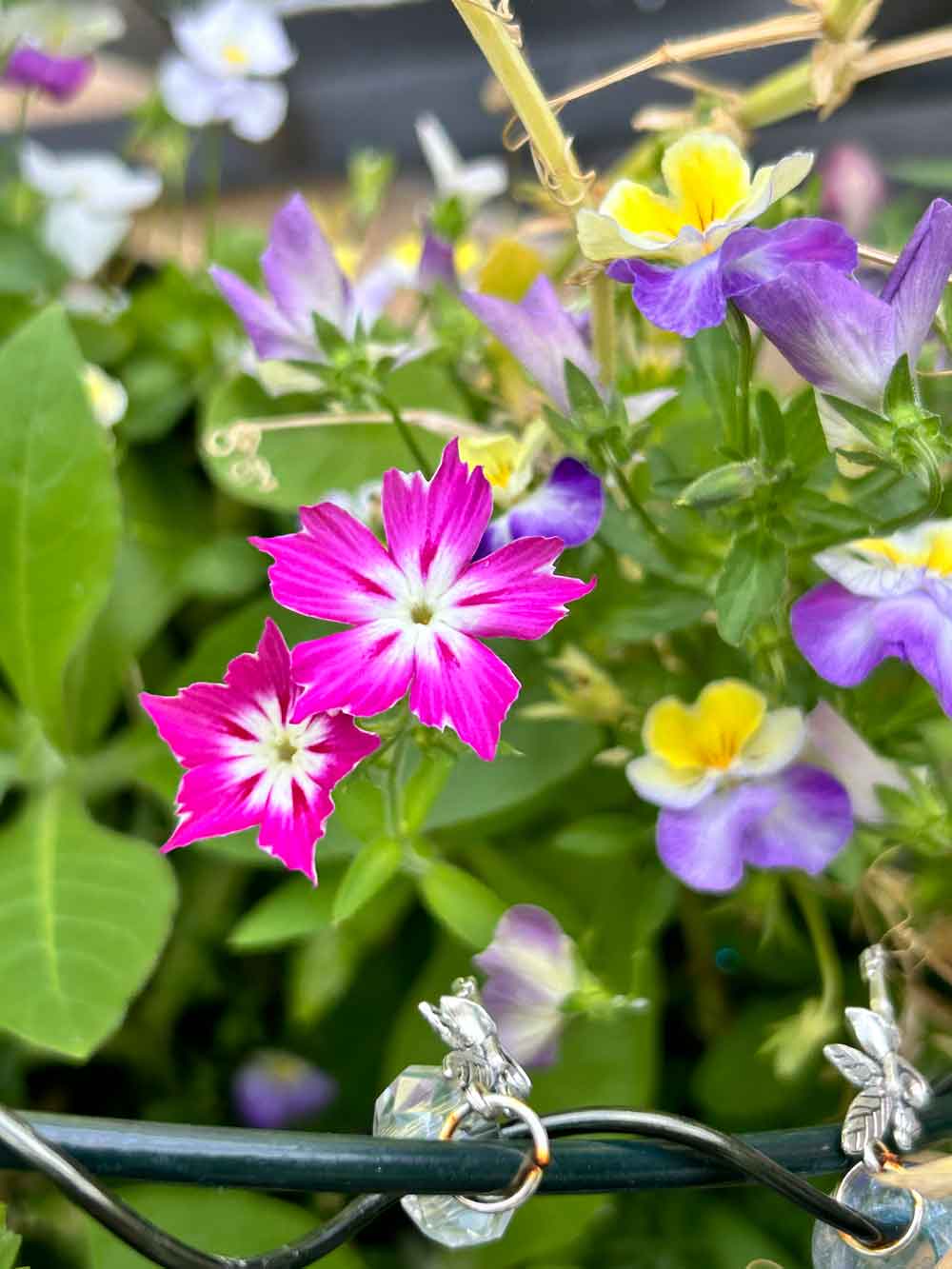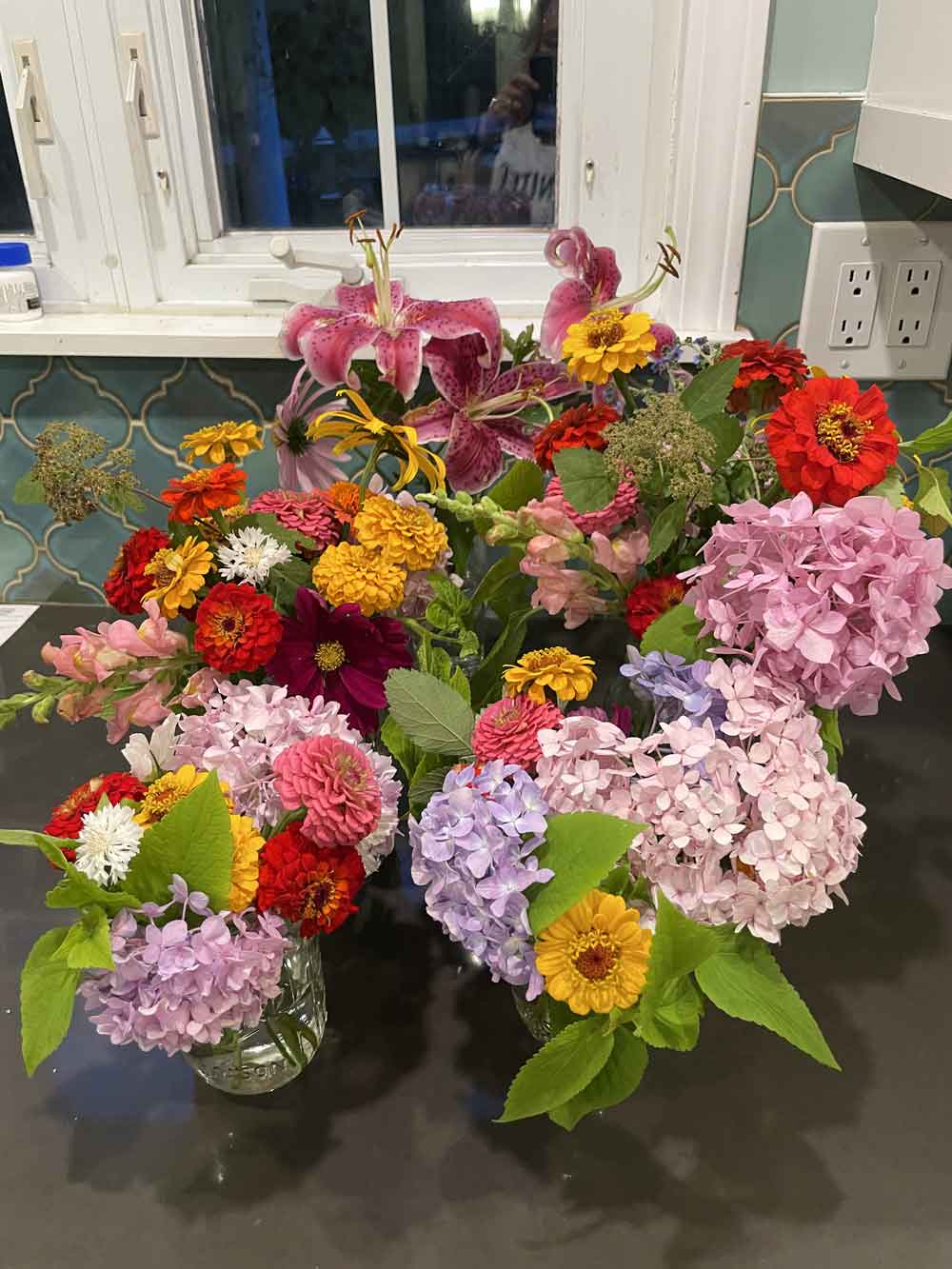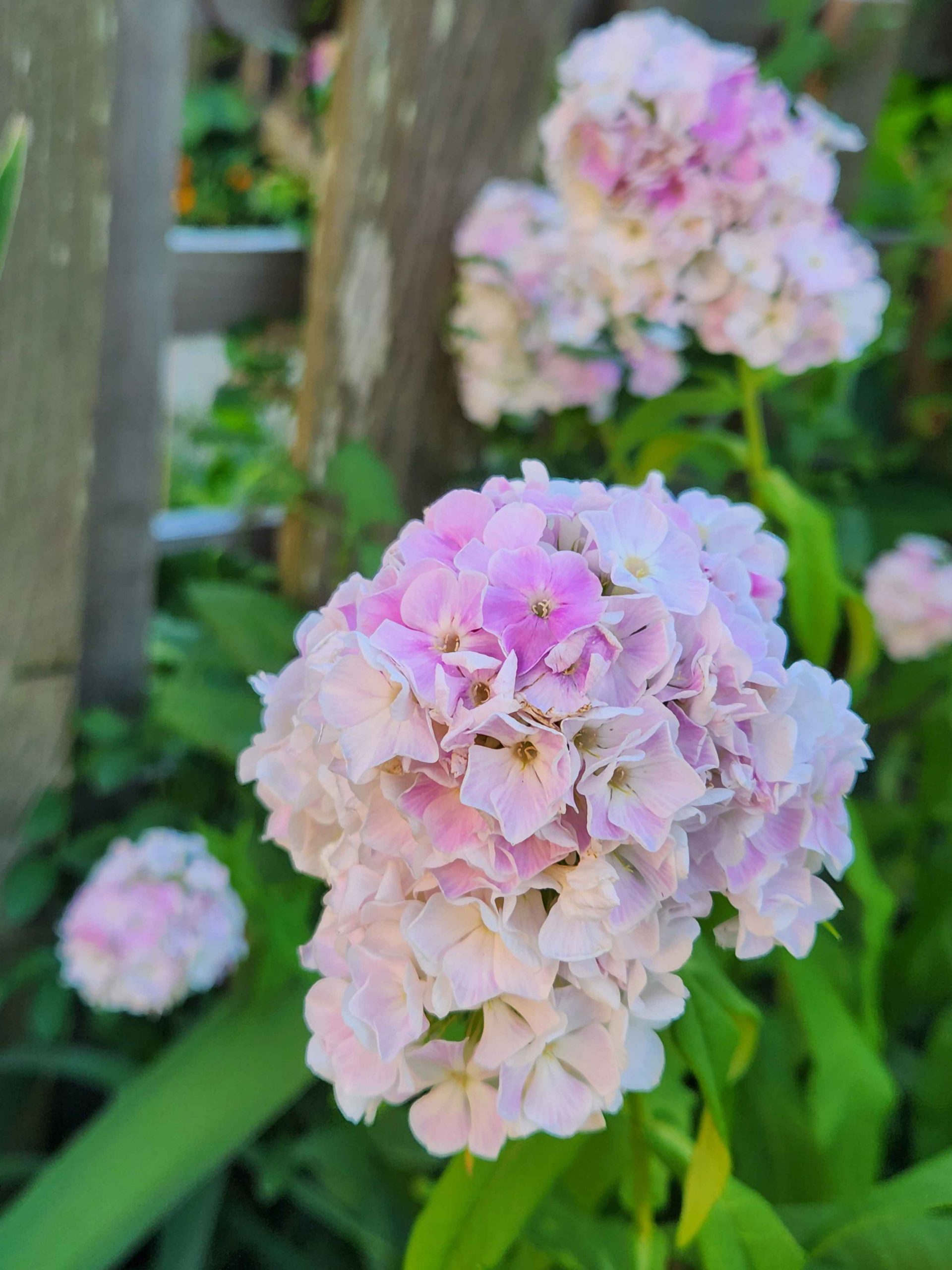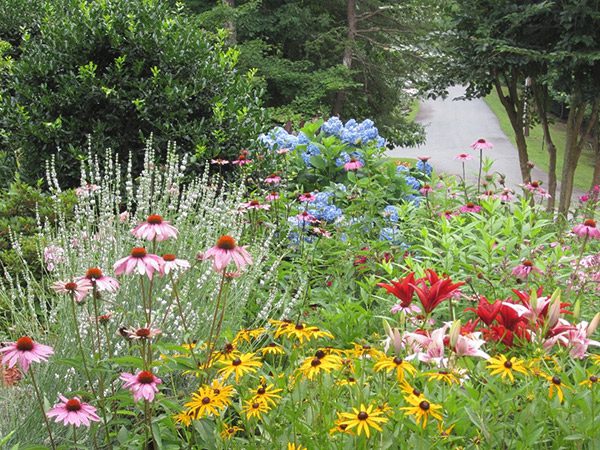About Phlox
Originating from North America, the Polemoniaceae family, commonly known as phlox, contains species found in various regions and climates across the continent. Easy to grow and maintain, phlox has been grown for generations as a staple garden flower, and has established its staying power as a great choice for cheering up front porches and patio gardens. Very little care is required to achieve success.
Most phlox species share identical or highly similar care needs, although they may differ in seasonal classification and foliage texture. Annuals thrive in USDA hardiness zones 3 through 9, while perennials reliably survive winter in zones 4 through 8. Phlox, regardless of type, are deer resistant and abundant in nectar, making them irresistible to butterflies, bees, and hummingbirds.
Garden or perennial phlox, Phlox paniculata, are some of the easiest perennials to grow and bring lasting, mid-summer color to the landscape on tall, thick columns of flowers. They establish quickly with full sun, are known for their pleasant vanilla-clove fragrance, and are often referred to as “tall phlox” as they can reach up to four feet tall. Just a few phlox will add major color to your whole garden.
Annual or drummond phlox, Phlox drummondii, is the most widely-used species in the family, growing roughly eight to twenty inches tall. It’s nearly identical to perennial phlox (Phlox paniculata), and one is often mistaken for the other.
Spring is the time for annual phlox varieties to bloom, but they fade out by mid-summer. Perennials then take over the spotlight, flowering from July through September.
Mountain phlox, Linianthus grandiflorus, is native to California, where it is known from the California Coast Ranges of the Central Coast and the San Francisco Bay Area. Mountain phlox is an annual plant characterized by whorled, needle-like foliage, reminiscent of piney green bottle brushes. Typically, mountain phlox reaches six inches high. It is California Department of Fish and Wildlife and IUCN listed Vulnerable species, and is on the California Native Plant Society Inventory of Rare and Endangered Plants.
When to Plant Phlox Seeds
Garden phlox seeds require a minimum of 60 days of cold stratification to aid in germination. (Annual phlox varieties do not require this first step.) This can be achieved either outdoors or in the refrigerator. For natural stratification, sow the seeds in late fall or winter in a weed-free area. The cold temperatures help break the seeds out of dormancy, and they will emerge in spring.
Alternatively, for artificial stratification, place the seeds on a damp paper towel, coffee filter, vermiculite, or sand in a sealed plastic bag. Store the bag in the refrigerator at temperatures between 33° to 40° F.
Once ready, phlox seeds germinate and grow rapidly, making direct sowing generally the preferred method. Directly sow your seeds outdoors in fall, if you so choose for garden phlox, or spring when the ground can be worked and the soil is consistently 65°F to 70°F. However, if spring arrives late in your area, you can begin indoors near a sunny window four to six weeks before transplanting. Using growing lights and heat mats can further aid in the successful cultivation of phlox from seed.
Where to Plant Phlox Seeds
Phlox thrives in sunny locations but appreciates some afternoon shade, especially in hot climates. When grown in ceramic containers, which absorb heat, it’s advisable to position potted phlox where they can avoid direct sunlight during the late afternoon.
No need to worry excessively about soil quality. Phlox flourishes in soils ranging from poor to medium quality, as long as they are moist, yet well-draining.
Garden phlox is suitable for the back or middle of a border, while annuals phlox varieties shine at the front.
How to Plant Phlox Seeds
When direct sowing, cover seed with ⅛ inch fine soil. Darkness is required for germination. Thin seedlings when first true leaves appear. If started indoors, begin the hardening off process after all danger of frost has passed and carefully transplant your seedlings to their outdoor location when first true leaves appear.
In drier locations, plant or thin phlox one foot apart. In humid or consistently irrigated beds, phlox should be spaced two feet apart.
How to Care for Phlox
Ensure your planting beds remain consistently moist by using a mist sprayer or setting your hose to a gentle flow. Once the plants have developed a few pairs of true leaves, you can reduce watering unless the specific phlox variety necessitates otherwise.
Phlox gradually develops into sizable clumps in the garden. To ensure healthy growth and prevent overcrowding, divide the plant every three or four years, preferably in early spring, spacing the clumps around 24 inches apart. Indicators that division is necessary include reduced flowering and a sparse center.
For gardens with poor soil, consider fertilizing annually in spring. Deadheading immediately after flowering will encourage additional flower production. In autumn or winter, trim your plant down to ground level once the foliage has withered.








